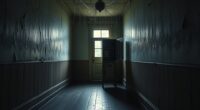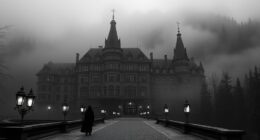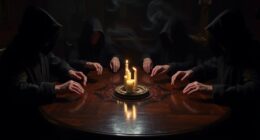The Amityville Horror combines a real family tragedy with questionable paranormal claims. In 1974, Ronald DeFeo Jr. murdered six family members, setting the stage for the Lutz family’s eerie experiences after moving in. Their accounts of strange occurrences sparked skepticism, with many labeling the story a hoax for profit. Investigations yielded little evidence, yet the tale’s cultural impact remains significant. Curious about how this story shaped beliefs and media? There’s plenty more to uncover!
Key Takeaways
- The DeFeo family murders in 1974 set the stage for the Lutz family’s subsequent paranormal claims in the same house.
- The Lutzes reported disturbing experiences, including strange odors and visual apparitions, but evidence supporting these claims is largely anecdotal.
- Skeptics, including sociologist Robert Bartholomew, argue the Amityville narrative is a hoax, citing inconsistencies and lack of concrete evidence.
- Legal disputes and financial gains from books and movies suggest potential exploitation of the tragic events for profit by the Lutz family.
- The Amityville story has profoundly influenced popular culture, spawning numerous adaptations and discussions about evil and trauma, despite its contested authenticity.
The DeFeo Family Murders: The True Horror
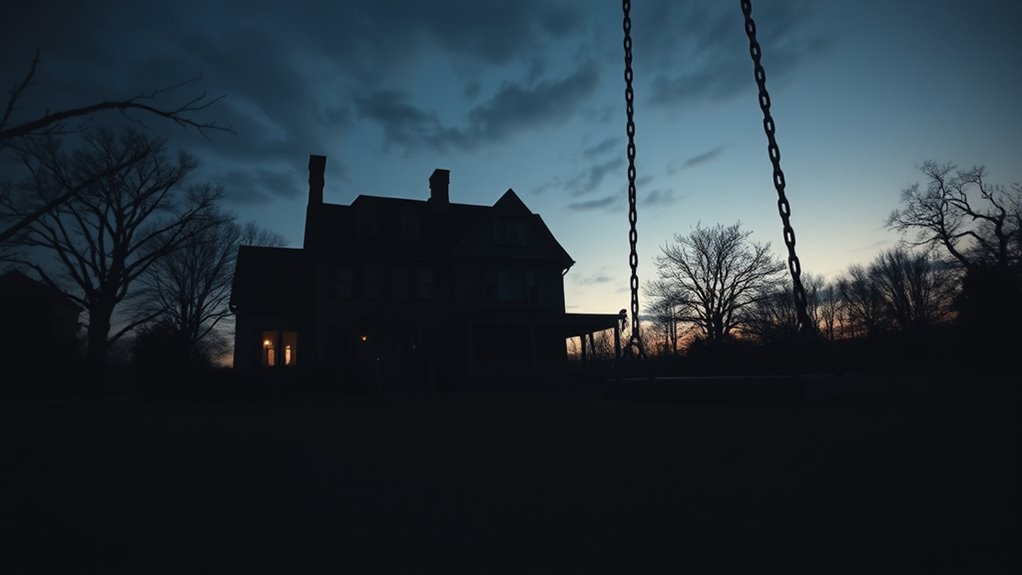
When you explore the chilling events of the DeFeo family murders, you’ll find yourself confronted with a story that shocked a community and sparked national intrigue.
On November 13, 1974, in the quiet suburb of Amityville, Ronald DeFeo Jr. brutally murdered six members of his family, including his parents and four siblings. Initially, he suggested a mob hit, but he later confessed during police questioning.
On a fateful November night in 1974, Ronald DeFeo Jr. committed an unimaginable crime, claiming the lives of six family members.
Speculations about family conflicts and mental health issues circulated, but no solid evidence of accomplices emerged. The trial revealed a complex web of motives but ultimately led to DeFeo receiving six life sentences.
The horror of that night left a mark on the community and continues to haunt true crime enthusiasts today.
The Lutz Family’s Paranormal Claims

Though they hoped for a fresh start, the Lutz family quickly found themselves engulfed in a series of terrifying paranormal experiences after moving into the Amityville house.
Shortly after their arrival, they invited a priest to bless the home, but during the ceremony, an unseen force allegedly slapped him and shouted, “Get out!”
Strange odors and unsettling sounds plagued them, while green slime oozed from walls.
George claimed to see a demonic pig-like creature with red eyes, and Kathy reportedly transformed into an elderly woman multiple times.
They experienced persistent cold spots despite the furnace running continuously, and they often woke at 3:15 a.m., the hour of the infamous murders.
Just 28 days later, they fled, leaving most belongings behind.
Skepticism and Hoax Allegations
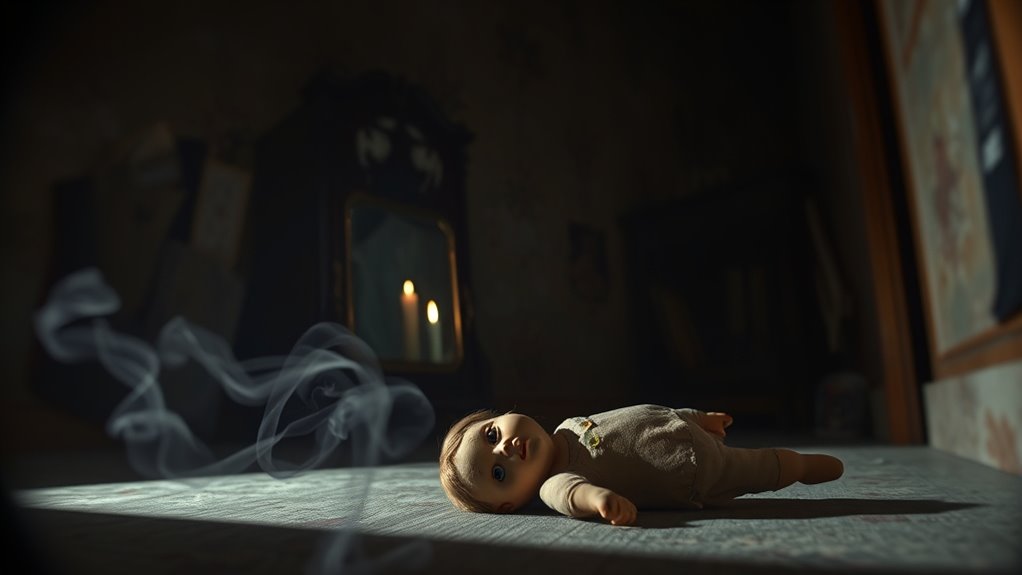
The Lutz family’s chilling accounts sparked intense debate and skepticism among both the public and experts. Many question the story due to inconsistencies and a lack of concrete evidence.
Skeptics argue that the tale was fabricated to exploit public interest, resulting in significant financial benefits. Sociologist Robert Bartholomew describes the Amityville myth as a hoax, attributing its spread to mass hysteria.
Despite skepticism, the legend endures, enchanting the imagination with tales of the supernatural. Media coverage has perpetuated the myth, often blurring the lines between fact and fiction.
Investigations into the haunting have uncovered little conclusive evidence, leaving doubts about the Lutzes’ claims and further fueling allegations of fabrication and sensationalism.
Legal Battles and Financial Gains

As the Amityville Horror saga unfolded, a series of legal battles emerged, revealing the complex interplay between personal grievances and financial ambitions.
In 1977, the Lutz family sued over newspaper articles, alleging invasion of privacy and mental distress. Meanwhile, lawyer William Weber claimed he helped create the horror narrative and sought $2 million from the Lutzes.
Disputes over contracts and fraud claims followed, and major media outlets faced legal scrutiny for their coverage. The Lutzes’ claims saw significant dismissals in court.
Despite financial struggles, the family reaped profits from the bestselling book and movie adaptations. However, public skepticism persisted, leading many to question their authenticity and motives throughout these ongoing disputes.
Cultural Impact and Enduring Legacy
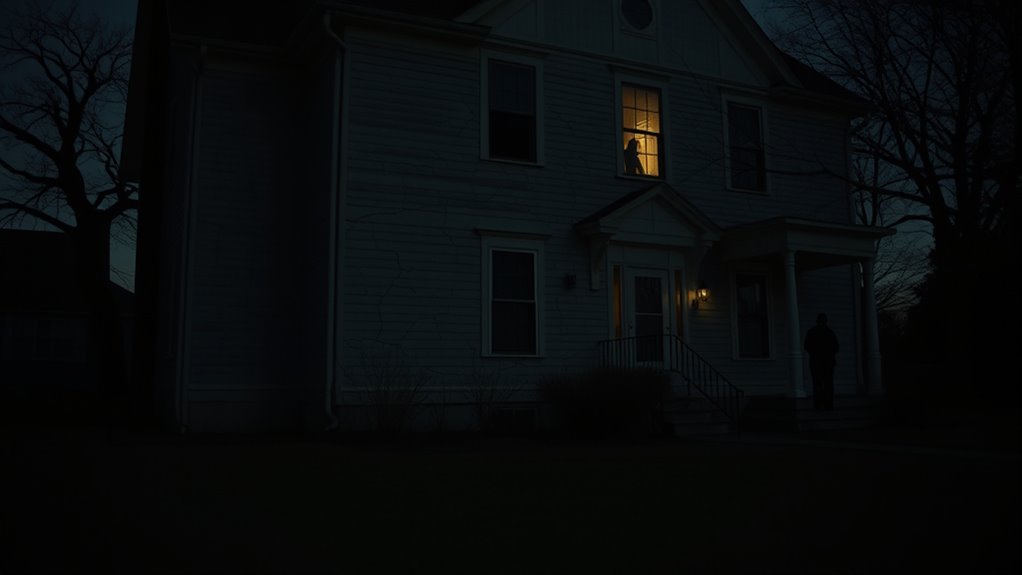
While many question the authenticity of the Amityville Horror, its cultural impact and enduring legacy are undeniable.
You’ve likely seen its influence across films, books, and documentaries, with over thirty-seven movies emerging since the original tale. This story taps into our fascination with the supernatural, mirroring societal fears of the 1970s, like serial killings and family trauma.
The franchise’s ability to evoke primal fears about home and security keeps it relevant. Public perception remains divided, yet the legend captivates audiences, bolstered by spiritual investigators like Ed and Lorraine Warren.
The Amityville Horror taps into deep fears of home and safety, continuing to intrigue audiences despite mixed public opinions.
The Amityville narrative not only shaped horror media but also sparked ongoing discussions about evil, trauma, and mass hysteria, making it a lasting cultural icon.
Frequently Asked Questions
What Happened to the Defeo House After the Lutz Family Left?
After the Lutz family left, the DeFeo house went through numerous ownership changes.
You’d notice it underwent physical alterations, like changing those eerie eye-like windows.
The local community began to see the house as a tourist attraction, and real estate agents marketed it for its historical significance.
Despite its notorious past, perceptions shifted over time, and the house became integrated back into community life, maintaining a unique place in public imagination.
How Has the Amityville Horror Influenced Real Estate in the Area?
Did you know the Amityville Horror house sold for $605,000 in 2017, $200,000 below the asking price?
This infamous property’s dark history influences real estate values in the area, attracting unique buyers while deterring those seeking privacy.
While its notoriety can drive interest, it often complicates resale.
Despite the haunting reputation, the house’s current value of around $6.2 million reflects a blend of historical intrigue and local market trends.
Are There Any Documentaries About the Amityville Horror?
Yes, there are several documentaries about the Amityville Horror.
You can explore titles like “Amityville Confidential,” which analyzes the infamous house’s history, or “My Amityville Horror,” featuring Daniel Lutz sharing his family’s experiences.
“Shock Docs: Amityville Horror House” investigates the controversy, while “Famously Haunted: Amityville” combines investigation with storytelling.
Each documentary provides unique insights, fueling your fascination with this chilling tale and its lasting impact on culture and media.
What Is the Current Status of the Amityville House?
Imagine a once-infamous house, now transformed into a peaceful home. The Amityville House, located at 108 Ocean Avenue, is still a residential property.
It’s undergone renovations that lessen its notorious reputation, with families currently living there. Despite its dark past, no recent owners have reported experiencing any paranormal activity.
In 2017, it sold for $605,000, showing that even haunted legends can find new life in the hands of modern homeowners.
How Has Public Perception of the Story Changed Over Time?
Public perception of the story has shifted dramatically over time.
Initially, many people embraced it as a haunting truth, captivated by its chilling details.
As skepticism grew, you might’ve noticed more voices claiming it was a hoax designed for profit.
Today, while some still find it compelling, the majority view it as a fabrication, yet its influence on horror culture and ongoing fascination keeps the legend alive in the collective imagination.
Conclusion
In the end, the Amityville Horror remains a tangled web of truth and deception. Like a shadowy figure lurking in the dark, the chilling tales of the Lutz family capture our imagination while skepticism casts its own shadow. Whether you believe in the supernatural or see it as a clever hoax, this story continues to haunt our cultural consciousness. The Amityville saga, with its blend of fear and fascination, reminds us that some mysteries might never be fully unraveled.

